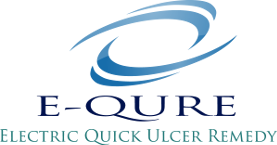FAQ
-
What is BST?
- The BST name stands for - Bioelectrical Signal Therapy.
- The BST is a noninvasive electrotherapy device
- The BST is a clinically proven medical device for the treatment of chronic non-healing wounds.
-
Why do doctors recommend the BST?
- Electrotherapy is the only treatment rated (2009) by the European and US Pressure Ulcers Advisory Panels (EPUAP and NPUAP) with the highest strength of evidence A.
- The BST is the only electrotherapy device proven (therapeutic effectiveness) in a Randomized Control Trial (RCT).
- The BST is the only electrotherapy device which is based on a fundamental endogenous bioelectrical signal discovered and validated on humans.
-
What are the BST indications for use?
- The BST is approved for the treatment of chronic non-healing wounds that include Diabetic Foot, Pressure ulcers (Decubitus), Vascular (Vein or Arterial) ulcers and other wounds that are resistant to standard or advanced care and even to more complex treatments.
- The BST is an adjunctive (added) therapy to the standard care e.g., dressing.
- The BST is approved for the clinical use in the hospital , clinic and home care setting.
- These indications are approved in Europe (CE), Canada, Brazil and Israel.
-
How is the BST used?
- The BST is comprised of two elements;
- A single channel – computerized bioelectrical generator.
- A pair of surface electrodes.
- Electrodes are placed on the healthy skin around the wound (noninvasive).
- The treatment mode is applied by the caregiver or by the patient through the operation of the user control panel.
- The bioelectrical transmission starts only after the automated check of appropriate electrodes placement.
- The patient is connected to the BST only during the treatment sessions.
-
What is the BST mode of action?
- The BST boosts the body’s naturally occurring electrical currents to stimulate the wound healing process by causing wounds to respond to stimulating signals (the BST signal)
- The BST triggers the following effects:
- Wound Healing - Initiation and acceleration of the wound healing process
- Pain - Reduction of local pain
- Tissue viability - Significant increase in:
- Granulation – regeneration of viable connective tissue
- Epithelialization – regeneration of viable epithelial tissue
- Vascularization (angiogenesis) – regeneration of vital blood vessels
-
What is the safety profile of the BST?
- The BST transmits a low intensity bioelectrical current of 0.3mA/cm2 (less then 1mA per cm2).
- Due to this low intensity current; the BST is painless
- Patients are using the BST with good compliance.
- More than 50,000 treatment sessions were applied by the BST with no report on severe adverse effects
- The safety profile of the BST was evaluated and proven in a randomized control trial.
-
How long is the treatment?
- It has been shown that the treatment with the BST device reduced by half the time the complete wound closure in comparison to standard care alone
- The BST is applied 2 to 3 times a day
- Each treatment session lasts for 30 minutes
- First indication for improvement of wounds prognosis may be observed within the first two weeks of treatment
- The average time for complete wound closure may be ranged from 45 to 60 days
-
What is the advantage of the E-Qure BST compared to other electrotherapies?
- The BST is the only electrotherapy device which transmits a fundamental human based bioelectrical signal
- The BST bioelectrical signal was discovered in humans during acute healing injury (natural wound healing).
- Other electrotherapies apply theoretical electrical signals based on the assumption that electrical stimulation (in general) may accelerate the wound healing process in chronic non-healing wounds
- Most electrotherapies apply direct current or pulsed electrical current to the wound, both types of these currents found less comfortable and can cause skin sensitivity in comparison to the BST signal which is an endogenous stochastic bioelectrical signal
- The BST is a noninvasive electrotherapy
- Other electrotherapies are based on electrodes that are placed within (on top) the wound (invasive).
- Other electrotherapies place accessories (the electrical stimulator) around the wound. This may create indirect pressure around the wound (with advanced dressing) and may worsen the tissue viability conditions.
- The BST is the only electrotherapy device available for clinical use which was proven in a randomized control trial
- The BST is the only electrotherapy device which has a specific safety module; an automated calibration system (which measures the skin potential of the patient before treatment) to prevent any possible adverse skin reaction to the electrical flow through the skin
-
What is the average treatment time?
- A complete closure of hard-to-heal wounds achieved after 45 to 60 days (published in JWC march 2010)
- It has been shown that treatment with the BST device may result in complete closure within half the time in comparison to standard care alone
- An improved wound bed prognosis is usually observed after two weeks of the BST device treatment
- Superficial wounds positively reacted to the BST faster than deep wounds
- Patients who also suffered from central neurological comorbidities and had chronic wounds that were resistant to other treatments, reacted positively and wounds were improved by the BST
- Patients with spinal cord injury may need more time to react to the BST i.e., first indication of improvement occurs usually after 1 month
-
What documentation/status has been published?
- The results of the randomized control study were published in the EWMA journal 2007
- The signal of the BST, therapeutic effectiveness and mode of action were published in JWC 2010
- Reports on BST therapeutic effects were also published in EWMA journal 2008 and 2009.
- 1
